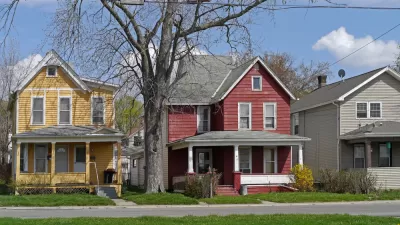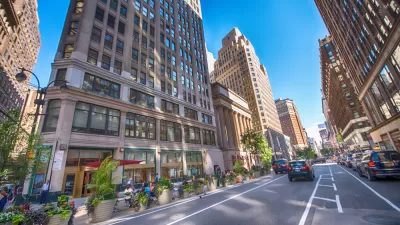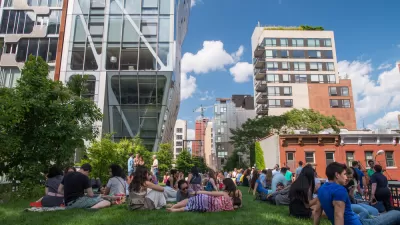In the election's wake, Richard Florida compiles some telling statistics on the nation's threatened middle class. It's on the decline, yes, but it's also becoming more segregated into certain cities, often in the Sunbelt and Rust Belt.

We've all seen the statistics on America's shrinking middle class. But how is that decline dispersed geographically, especially in metro areas? Richard Florida discusses data from Pew covering 2000 through 2014.
For one thing, a process of segregation is taking place, dividing metros and neighborhoods more thoroughly by income. "Nationwide, 172 of 229 metros saw growth in affluent, upper-income households in the past decade and a half; 160 saw an increase in the share of low-income households; and roughly half, 108, experienced both." Also, "[t]he share of American families living in either all-poor or all-affluent neighborhoods more than doubled, increasing from roughly 15 percent to nearly 34 percent."
Florida points out that across the country, cities are seeing their middle classes shrink. "What really stands out is that every single large metro (over one million people) saw its middle class decline. In fact, less than 10 percent of all U.S. metros saw any increase in their middle class whatsoever, with most of these gains being in the range of one percent. The large metros where the middle class is smallest are a combination of superstar cities, tech hubs, resource economies and poorer places. [Among large metros] L.A. has the smallest middle class overall, followed by San Francisco, New York, and San Jose."
From the maps included, it's clear that the metros with the largest middle classes tend to be in places that favored Donald Trump this year. "Simply put, a big part of our national economic dilemma is this: the middle class is larger in declining places and smaller in growing ones. This is especially troubling as a large middle class remains a bulwark against rising economic inequality."
FULL STORY: The Geography of Middle Class Decline

Alabama: Trump Terminates Settlements for Black Communities Harmed By Raw Sewage
Trump deemed the landmark civil rights agreement “illegal DEI and environmental justice policy.”

Study: Maui’s Plan to Convert Vacation Rentals to Long-Term Housing Could Cause Nearly $1 Billion Economic Loss
The plan would reduce visitor accommodation by 25% resulting in 1,900 jobs lost.

Why Should We Subsidize Public Transportation?
Many public transit agencies face financial stress due to rising costs, declining fare revenue, and declining subsidies. Transit advocates must provide a strong business case for increasing public transit funding.

Paris Bike Boom Leads to Steep Drop in Air Pollution
The French city’s air quality has improved dramatically in the past 20 years, coinciding with a growth in cycling.

Why Housing Costs More to Build in California Than in Texas
Hard costs like labor and materials combined with ‘soft’ costs such as permitting make building in the San Francisco Bay Area almost three times as costly as in Texas cities.

San Diego County Sees a Rise in Urban Coyotes
San Diego County experiences a rise in urban coyotes, as sightings become prevalent throughout its urban neighbourhoods and surrounding areas.
Urban Design for Planners 1: Software Tools
This six-course series explores essential urban design concepts using open source software and equips planners with the tools they need to participate fully in the urban design process.
Planning for Universal Design
Learn the tools for implementing Universal Design in planning regulations.
Smith Gee Studio
Alamo Area Metropolitan Planning Organization
City of Santa Clarita
Institute for Housing and Urban Development Studies (IHS)
City of Grandview
Harvard GSD Executive Education
Toledo-Lucas County Plan Commissions
Salt Lake City
NYU Wagner Graduate School of Public Service





























